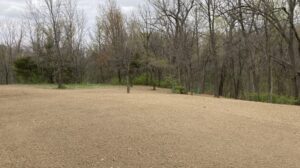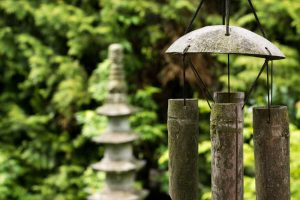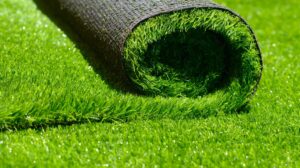Designing a low-maintenance landscape in Southern Oregon is about creating outdoor beauty that doesn’t demand constant attention. With the right approach, you can enjoy a stunning yard that thrives in the region’s unique climate—without spending every weekend tending to it. Let’s explore how to design an easy-care, water-efficient landscape that fits the Southern Oregon lifestyle.
Why Low-Maintenance Landscaping Works Best in Southern Oregon
Southern Oregon’s climate can be unpredictable—hot, dry summers followed by cool, wet winters. These fluctuations make traditional lawns and high-maintenance gardens tough to manage. By designing with local conditions in mind, you’ll save time, water, and money while still maintaining a visually appealing yard.
Low-maintenance landscaping not only conserves natural resources but also creates a sustainable outdoor environment that complements your home and lifestyle.
Plan with Purpose
Before diving into plant selection or decor, start with a plan.
- Understand your yard: Observe how much sunlight different areas receive and note soil type and drainage patterns.
- Set clear goals: Decide what you want—maybe a relaxing patio space, a colorful garden, or a mix of both.
- Keep it simple: The more features you add, the more maintenance it requires. Focus on clean lines, open spaces, and plants that require minimal care.
A thoughtful design ensures your landscape looks good year-round and functions well with minimal input.
Choose Native and Drought-Tolerant Plants
Native plants are the backbone of any low-maintenance landscape in Southern Oregon. They’re already adapted to the local climate, meaning less watering, fewer pests, and less fertilizer.
Here are some excellent options:
- Oregon Grape: Evergreen shrub that adds year-round color.
- Manzanita: Attractive bark and spring flowers.
- Lavender: Drought-tolerant and fragrant.
- Yarrow: Hardy and great for pollinators.
- California Poppy: Perfect for bright pops of seasonal color.
Planting in groups with similar watering needs—known as hydrozoning—helps conserve water and simplify irrigation.
Skip the Traditional Lawn
Lawns look nice, but they’re high-maintenance and thirsty. Instead, try:
- Creeping thyme or clover lawns: Green and soft but require far less mowing.
- Gravel and stone designs: Offer a clean, modern look that’s easy to maintain.
- Artificial turf: Perfect if you want a lawn-like look without watering or mowing.
These alternatives not only reduce upkeep but also blend beautifully with Southern Oregon’s natural landscape.
Smart Irrigation and Mulching
Water is precious, especially in Southern Oregon’s dry season. Installing a drip irrigation system ensures water goes straight to plant roots, reducing waste. Smart controllers that adjust automatically based on weather can save even more.
Add mulch around plants to retain moisture, regulate soil temperature, and prevent weeds. Bark chips, pine needles, or compost make excellent choices for local conditions.
Incorporate Sustainable Hardscaping
Hardscaping—like walkways, patios, or rock gardens—adds structure and minimizes upkeep.
- Permeable pavers allow rainwater to soak through, preventing puddles.
- Natural stone or gravel pathways require little care and look timeless.
- Raised beds make planting and maintenance easier.
Combining hard surfaces with low-care plants creates a balanced, functional design that’s both practical and beautiful.
Add Trees for Shade and Comfort
Strategically planting trees can help reduce energy costs and create a more comfortable outdoor space. Trees like Oregon white oak, Japanese maple, and madrone thrive in Southern Oregon’s soil. They provide natural shade, reduce heat, and add structure to your landscape without needing constant attention.
Wildlife-Friendly and Eco-Conscious Touches
Low-maintenance doesn’t mean lifeless. Adding a few elements for local wildlife keeps your garden vibrant and connected to nature.
- Include birdbaths, pollinator plants, and native shrubs.
- Avoid chemical pesticides—native plants naturally attract beneficial insects.
- Let certain areas grow more naturally for birds and butterflies to thrive.
You’ll create a space that feels alive while still being easy to care for.
Simple Seasonal Upkeep
Even a low-maintenance yard needs a little attention. Here’s what to focus on:
- Spring: Trim dead growth and refresh mulch.
- Summer: Monitor irrigation and remove weeds.
- Fall: Rake lightly or use fallen leaves as compost.
- Winter: Protect young plants from frost.
These small tasks keep your landscape looking its best without heavy labor.
Conclusion
Designing a low-maintenance landscape for Southern Oregon is about working with nature, not against it. By choosing native plants, reducing lawn space, and installing smart irrigation, you’ll create a yard that’s both stunning and sustainable. Whether you prefer modern minimalism or rustic charm, an easy-care landscape gives you more time to relax and enjoy the natural beauty around you.



